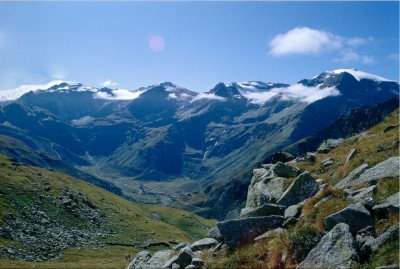Data & facts about the largest national park in the Alps
The Hohe Tauern National Park in figures
The 1,856 square kilometre Hohe Tauern National Park is split into a 1,213 square kilometre core zone and a 643 square kilometre outer zone and stretches over three provinces.
The Hohe Tauern National Park is the largest national park in the Alps and one of the largest protected areas in Central Europe.
Area: 1,856 sq. km
Breakdown
|
|
Core zone |
Outer zone |
Total |
|
Carinthia |
327 |
113 |
440 |
|
Salzburg |
539 |
266 |
805 |
|
Tyrol |
347 |
264 |
611 |
|
Total |
1,213 sq. km |
643 sq. km |
1,856 sq. km |
Outer zone – the targeted subsidisation of alpine farming measures is used to help preserve the characteristic landscape.
Core zone – strict protection. It is not permitted to use 75 % of the area for economic purposes.
National park history -
the formation of the Alps
The Tauern Window is an unusual geological feature:
You can view an exciting journey through the millennia of Earth's history.



